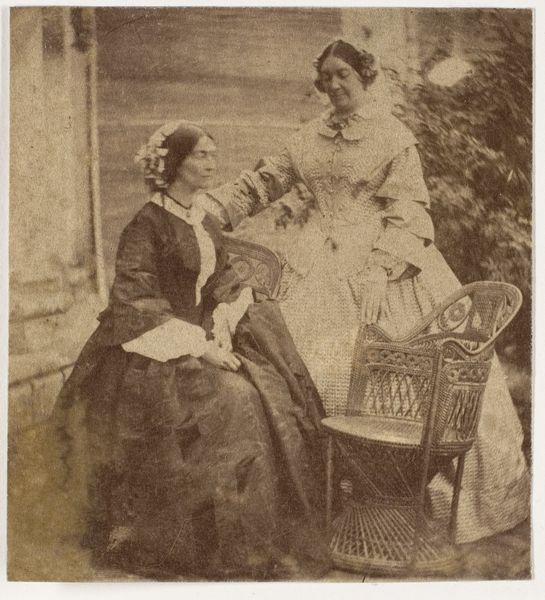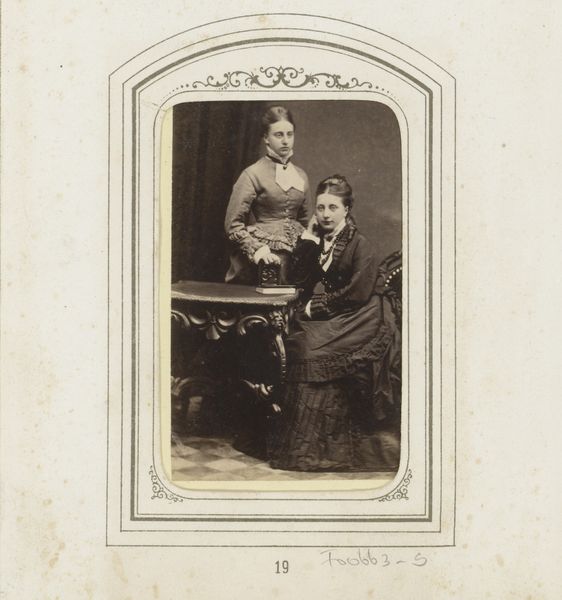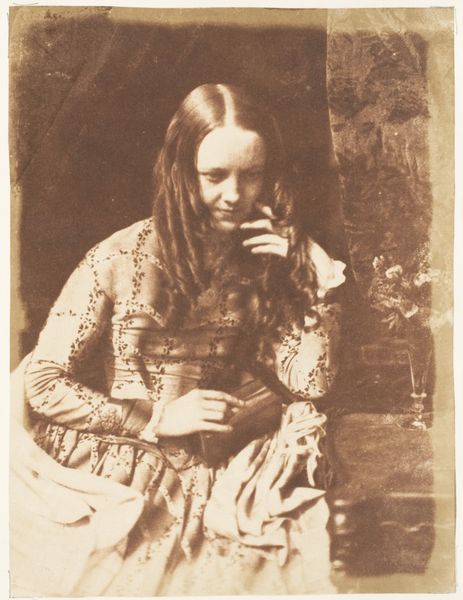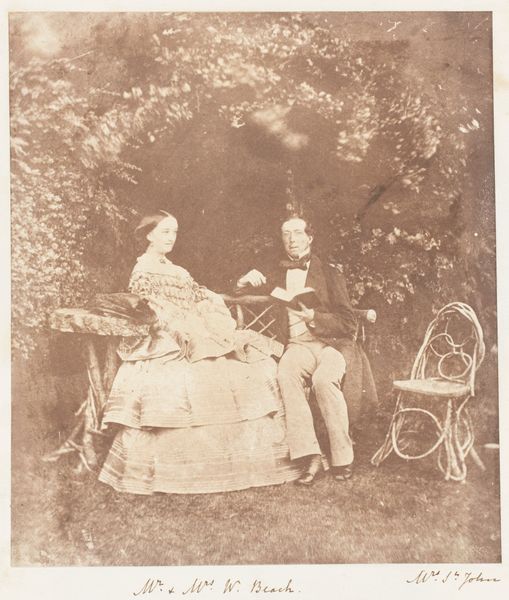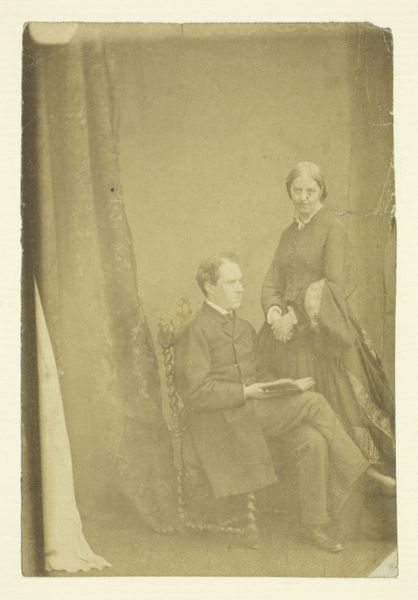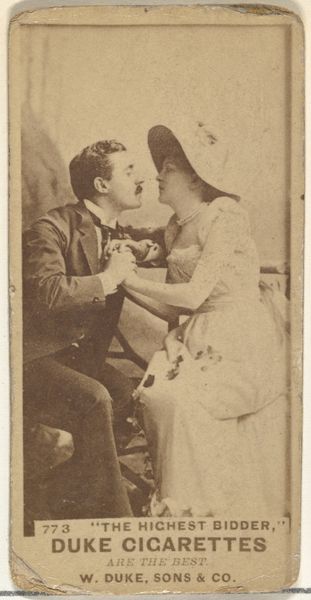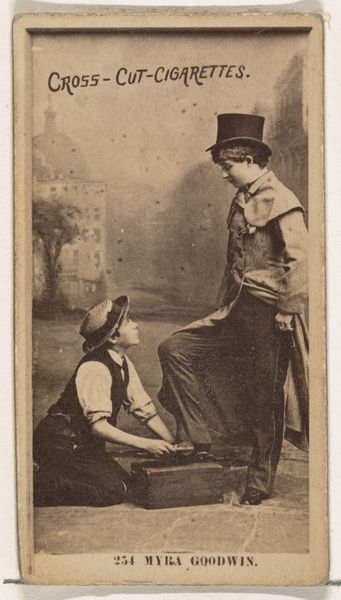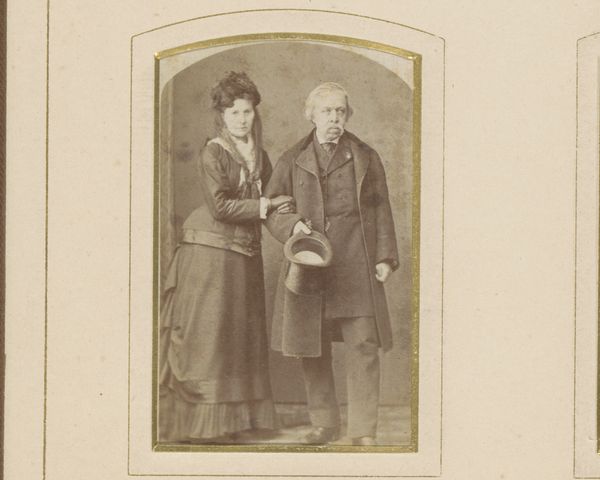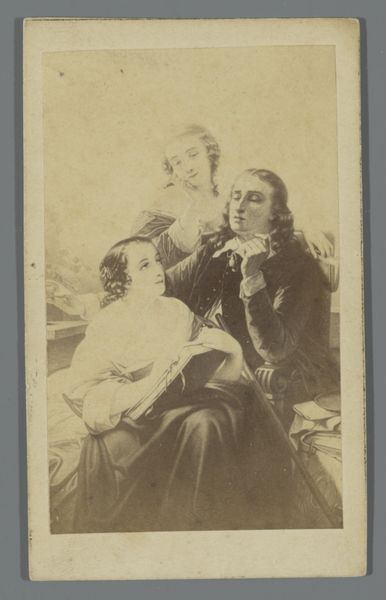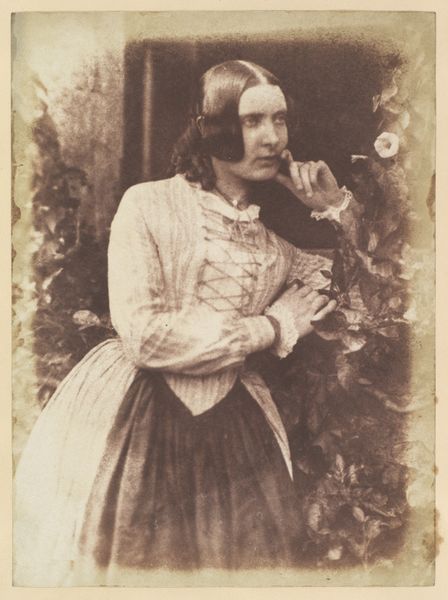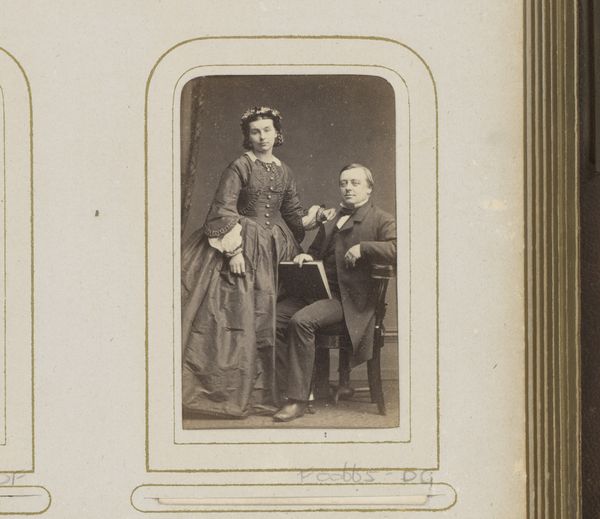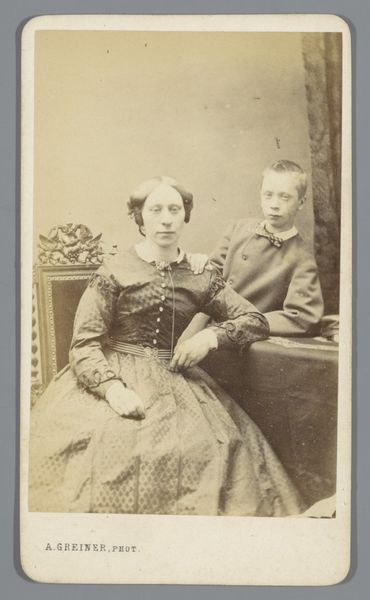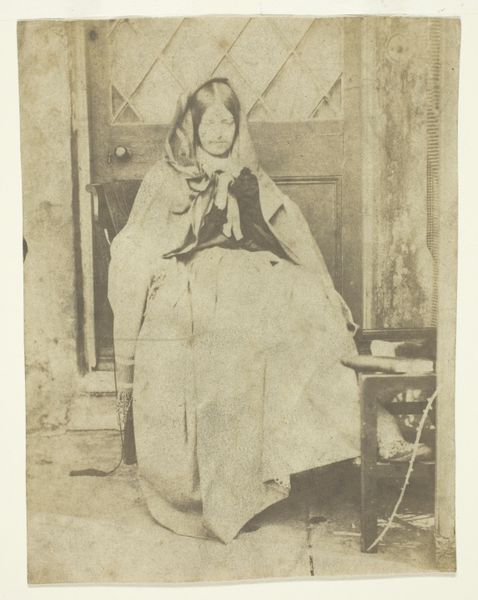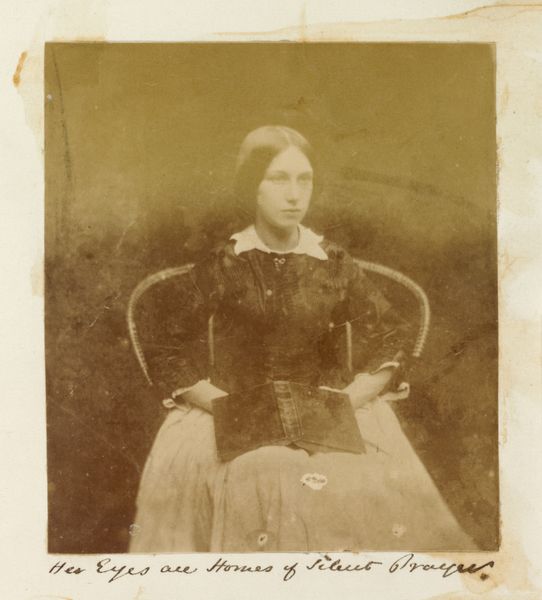
print, paper, photography
#
portrait
#
16_19th-century
# print
#
paper
#
photography
#
england
Dimensions: 11.7 × 9.6 cm (image/paper)
Copyright: Public Domain
Curator: Looking at this sepia-toned print, what’s your initial impression? Editor: There's a palpable stillness, almost melancholic. Two women, one standing, one seated and holding a cat, seemingly frozen in time by the camera's eye. The lighting is muted and feels like a memory fading into the past. Curator: This is "Mrs. Craik Holding Cat," a photographic print from around 1858 attributed to Benjamin Mulock, now housed at the Art Institute of Chicago. The composition showcases Mulock's understanding of portraiture traditions of the time, but the medium adds a compelling texture. Editor: That interplay between traditional portraiture and early photography is fascinating. Examining the dress of the standing figure, with its layered fabrics and the intricate shawl – clearly, social status is being communicated here through careful detail in clothing and adornment. Curator: Indeed, the deliberate display of material wealth contrasts with the softer depiction of the seated woman and the almost vulnerable way she holds the cat. It invites speculation about their relationship and perhaps their roles within the household or society at large. We need to examine the socioeconomic factors in place here to really unearth the full story behind Mulock's work. Editor: The texture of the photograph itself speaks volumes. You can see the paper fibers, the subtle imperfections – all evidence of a handmade process. Early photography wasn’t just about capturing an image; it involved the laborious and alchemic process of manipulating chemicals and materials. Curator: Exactly. And think about the cultural context! Photography was still relatively new, democratizing portraiture while also prompting anxieties about representation and authenticity. This photograph participates in those debates, becoming an artifact ripe for both aesthetic and social inquiry. I think one needs to understand the institutional context of photographic production. The patronage system in England at the time must have played a key role in such artistic productions. Editor: It’s captivating how a single image can hold so much complexity when viewed through different lenses. This is far more than just a record of two women with a cat; it’s a carefully constructed narrative shaped by materials, social conventions, and the evolving technology of photography. Curator: Absolutely, making Mulock’s artistic endeavor a unique historical object that offers critical insight into Victorian England. Editor: Precisely. Each of these things works together, enriching the stories this work whispers about that historical time.
Comments
No comments
Be the first to comment and join the conversation on the ultimate creative platform.
